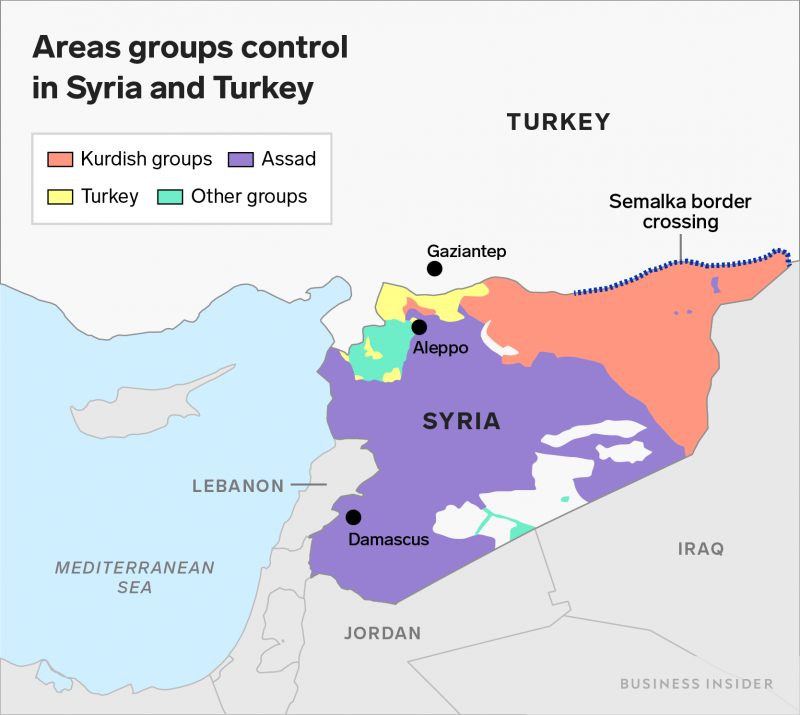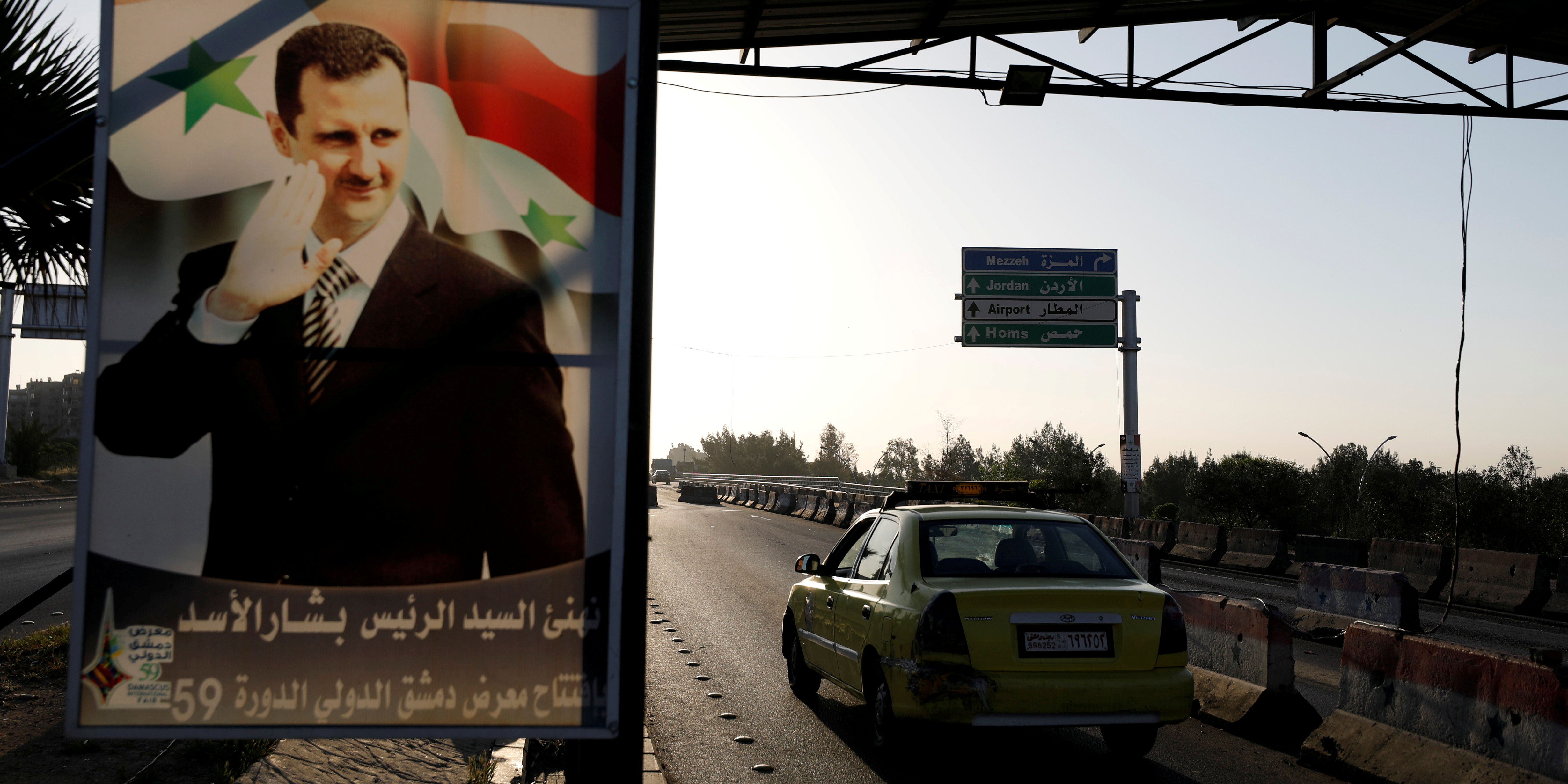- Who controls which parts of Syria has changed dramatically since the civil war began in 2011.
- While Kurdish forces control a large swath of northeastern Syria, a Turkish incursion threatens to change that.
- Syrian President Bashar Assad, who used chemical weapons against his own people, now controls about half the country.
- Visit Business Insider’s home page for more stories.
Since the Syrian civil war started in 2011, who controls what parts of the country has changed dramatically.
President Donald Trump’s abrupt decision to pull US forces from Kurdish-controlled areas in northeastern Syria, which Turkey threatens to invade, cast renewed attention on Syria’s territorial divisions.
As of October, Kurdish forces, loosely allied under the banner of the Syrian Democratic Forces (SDF), control much of northeastern Syria, from the northern border with Turkey, encompassing the former ISIS capital in the city of Raqqa, south to al-Qaim on the Syria-Iraq border, as well as a bit of territory in western Syria, north of Aleppo.
Here are the major forces that control Syria.

Kurdish forces, aligned with Arab fighters in the SDF, control the northeastern part of Syria.

The Kurds are a stateless people who live primarily in Iran, Iraq, Syria, and Turkey, although some Kurds live in Europe and North America.
In Syria, the Kurdish YPG, meaning People's Protection Units, fought as a part of the SDF and alongside US forces to defeat ISIS in the territory the Kurds call Rojava.
The SDF, which included Arab fighters, took as many as 11,000 casualties but largely drove ISIS from Syria.
As retired US Army Gen. Joseph Votel, who led US Central Command during the campaign against ISIS, wrote in The Atlantic on Tuesday, "Eventually, the YPG became the backbone of the fighting force against ISIS in Syria. Without it, President Donald Trump could not have declared the complete defeat of ISIS."
Kurdish forces control the northeastern part of Syria, as well as a sliver of land north of Aleppo. However, after Trump decided to abandon Syrian Kurds, who are under imminent threat of attack by Turkey, that territory may change.
Turkish forces control a few scattered bits of land near the Syrian city of Aleppo, as well as a strip along the Syrian border, south of the Turkish city of Gaziantep.

Turkey has been critical of the SDF, seeing it as allied with the Kurdish Workers' Party (PKK), which is based in Turkey and Iraq.
The PKK has clashed with the Turkish government, which in the past prohibited Turkish Kurds from speaking their language or expressing their ethnic identity at all.
Several times since its founding in the 1970s, the PKK's demands for autonomy within Turkey have turned violent, causing many governments, including Turkey and the US, to label the PKK a terrorist organization.
According to the BBC, approximately 40,000 people have died in the conflict between Turkey and the PKK.
In northeastern Syria, Turkey has established a "safe zone" where it can resettle Syrian refugees who fled the civil war and create a buffer between itself and Kurdish forces. The US agreed to the safe zone, but with a sudden absence of US forces, it's not clear how far Turkey intends to push into Syria, Reuters reports.
Assad regime forces hold most of Syria.

Syrian President Bashar Assad, with significant support from Russia, Iran, and the Iranian-backed militant group Hezbollah, has fought to regain control of significant parts of Syria.
The regime controlled only a portion of western Syria in 2015, as the ISIS presence grew there.
Assad has vowed to retake "every inch" of Syria, but during his campaign civilians have suffered brutal attacks, including the use of chemical weapons.
Some 11 million Syrians have been displaced inside and outside the country during the conflict, and more than 500,000 have keen killed, according to the Syrian Observatory for Human Rights.
Other, smaller pieces of the country are held by groups like Hayat Tahrir al-Sham, which holds territory in the northwest.

Hayat Tahrir al-Sham (HTS) was founded as Jabhat al-Nusra around the start of the Syrian civil war.
It announced its split from from al-Qaeda in 2017, according to the Center for Strategic and International Studies, although the US and the UN said as recently as last year that HTS was still linked with al-Qaeda.
HTS's raison d'etre is to topple the Assad regime and establish an Islamic emirate in Syria, according to the Center for International Security and Cooperation at Stanford.
"HTS is seen as extreme and authoritarian," Mouas Moustafa, executive director of the Syrian Emergency Task Force, told PBS NewsHour. "The fact that the regime continues to target civilians is one reason HTS is tolerated, but as soon as there is a lull in violence, populations go back to protesting HTS."
